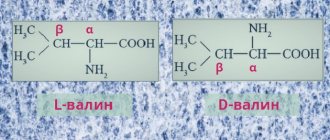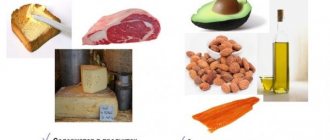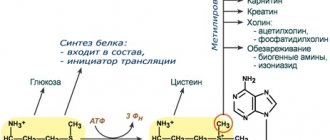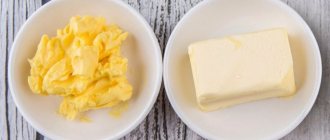Importance of Collagen
Collagen is a protein created by the human body. Serious effect on well-being and skin rejuvenation. The basis of all connective tissue. Today even doctors are talking about its benefits. The body itself can serve as a source of its required amount. With age, starting from the age of 25, this function weakens. Hence the first wrinkles and the possibility of arthritis. The question arises: “Where can I get it?” Of course, it is better to take supplements with this product for the face and joints. It's special, high-quality, easily digestible. But for various reasons, people want to take this element from food.
You have to understand that it is found in products of a different type than in us. For it to be absorbed, a whole biological system is involved. Any protein is synthesized from amino acids. Figuratively, a collagen molecule is a collection of its unchanged components: lysine, glycine, proline. The first one is needed by cartilage, muscles, and restores injured areas. Lysine – forms bones, constructs collagen. An indispensable product after operations and injuries. Proline is the strength of the connecting threads of the heart, epidermis, and cartilage.
What is collagen used for? The benefits of collagen for humans
Natural collagen is essential for joints, skin, heart muscle, blood vessels, muscle fibers and tendons.
Collagen and our skin
Natural collagen has a beneficial effect on the skin. Protein deficiency causes early skin aging, aging and loss of elasticity. Protein makes the epidermis smooth, strengthens local immunity, increasing the protective functions of the dermis.
If the substance is present in the body in sufficient quantities, the skin retains its elasticity and firmness longer, and the aging process and the appearance of wrinkles slow down. Protein maintains a beautiful and even complexion.
Collagen triggers the natural processes of self-regeneration of the skin in case of mechanical damage, promoting rapid wound healing.
collagen is a protein synthesized in connective tissue and plays a huge role in the human body
The role of collagen in a healthy diet
Collagen from foods is absorbed by the body only with the participation of other elements. To produce this protein, mineral elements, vitamins, hyaluronic acid and amino acids are needed. If food does not supply enough of one of the listed substances, the absorption process will be difficult or completely stopped. And this will immediately have a negative impact on the general condition.
The daily requirement of this protein for a child and an adult
The amount of protein per day depends on the degree of physical activity. An adult with moderate activity needs to receive at least 5 g of the substance per day. Athletes who subject their bodies to excessive stress, for example, bodybuilders and powerlifters, need up to 10 g. In childhood, 5 g of the substance is considered the norm.
Reasons for shortage
Factors influencing the weakening of human collagen production:
- Hormonal imbalance;
- Alcohol, smoking;
- Anxiety, stress;
- Excessive sun exposure;
- The use of diets, consumption of unfortified foods, therapeutic fasting;
- Wrong diet (lack of necessary organic compounds, vitamins)
- Abuse of sweets.
Hormones play a significant role in the production of collagen. Hence its sharp decrease during menopause, which affects appearance. In the first five years after its onset, fibrillar dermal fibers decrease by thirty percent. For the face it is manifested by pronounced withering.
How we lose collagen
The cause of protein deficiency can be not only an age-related slowdown in metabolism. Other factors also influence its production:
- hormonal status;
- bad habits;
- excessive sugar consumption;
- poor nutrition, diets and hunger strikes;
- frequent stress;
- prolonged exposure to the open sun;
- hormonal disorders;
- some autoimmune diseases.
It is known that sex enzymes play an important role in the synthesis of natural collagen. Well, since the secretion of hormones in the stronger sex does not decrease as quickly as in women, signs of aging appear much later, which means that men do not have to make as much effort to maintain youth.
Important. Collagen production drops especially sharply after menopause. Thus, in the first 5 years of the menopausal period, the number of fibrillar fibers in the skin decreases by more than 30%.
Affects the rate of recovery of protein compounds and unbalanced nutrition. If the body does not receive all the necessary amino acids and vitamins, the first symptoms of deficiency will appear very soon and the state of health will worsen.
Selecting a menu
Here is a table with the percentage of collagen in basic products.
The island of Okinawa is famous for its longevity. 100 years is practically the senior average age. This fact attracted the attention of researchers. It turned out that the main component of the Japanese food supply is bone broth, consumed daily. We will give the recipe below.
For now, let's list the foods that contain the most collagen.
- Broth made from the bones of cattle and pigs is one of the main storage areas. Good digestibility. Beef broth - type I (external beauty, health), poultry broth (chicken, turkey) - type II. Recommended for joints and cartilage.
It is advisable to make such soups every day, 200-400g each.
- Second place - meat products: beef, pork, rabbits, ducks, chickens, turkey.
The meat of the latter, which is more actively digested, includes stable collagen. Lamb, weaker pork. Moreover, its regeneration is reduced by additional substances. Other components and structures contained in the product reduce its production, but turkey is an exception. Digestion forms carnosine, which protects the described component from destruction.
- Fatty varieties of ocean fish. Note that there are omega acids that promote protein construction and inhibit age-related changes. Beneficial for the face and all vital functions. Sea kale will enhance the effect.
Eggs are a good source. The yolk is especially irreplaceable. They are used for future use due to sulfur, which ensures the formation of collagen, cleanses the hematopoietic organs, and removes toxins that destroy it.
- Spirulina is a healing plant supplier of AMK, especially glycine. This dry supplement is sold in natural food stores. Pour into desserts, cereals, smoothies, drinks.
Foods High in Natural Collagen
Which foods contain a lot of collagen are presented in the table:
| Product | Protein percentage per 100 g |
| Beef | 2.6 |
| Turkey meat | 2.4 |
| Pork | 2.1 |
| Mutton | 1.6 |
| Salmon and other types of salmon fish | 1.6 |
| Rabbit meat | 1.55 |
| Duck | 0.87 |
| Chicken | 0.7 |
These products should form the basis of the diet. But it is important to consume not only foods containing collagen, elastin and hyaluronic acid, but also foods rich in vitamin components and amino acids that promote the complete absorption of protein and stimulate its synthesis.
if desired, the lack of collagen can be compensated for by medication
Gelatin
We highlight this as a separate item as particularly important.
It is called cooked collagen made from animal connective tissue. According to the technology - denaturation - long-term slow evaporation of the liquid, further granulation.
An auxiliary menu product, usually harmless.
Healthy, lots of amino acids. Does not replace supplements or turkey meat, but is used to improve collagen levels.
Cooking methods
- Aqueous solution: 1 tablespoon per glass. Half an hour before meals. It's difficult to drink such a drink - there is a second option.
- Two tea l. gelatin is diluted with warm water. Waiting for it to swell. Add 150 grams of warmed milk there. Take the product thirty minutes before breakfast. Course 30 days. Beneficial for joints and skin.
- Dry powder intake – 1 teaspoon. Take it with ascorbic acid.
- Honey method - 5g powder -150 ml cold H2O. We are waiting for the next morning. Add honey. We dilute it. Course 3 months. Apply for ten days, take ten days off, etc.
Contraindications
Due to astringent, thickening, “adhesive” properties.
1) for kidney stones, gall bladder, constipation, hemorrhoids.
2) cardiac patients;
3) atherosclerosis;
4) thrombosis, thrombophlebitis;
5) high blood clotting.
Agar-agar
Asia is popularizing agar-agar instead of gelatin. Extracted from red and brown seaweed. A more favorable, harmless product, with a huge content of healing natural compositions and microelements. Excellent replacement.
How to choose
Crystalline homogeneous powder. Golden color. Yellowed, stuck together - poor quality. The product is dangerous for ingestion!
Healthy gelatin-based dishes
Fruit, berry jellies;
Aspic;
Various aspic dishes.
Useful dietary supplements with collagen
There are preparations on sale with fish and animal collagen that are used to prevent deficiency and slow down the aging process. The substance in dietary supplements is in the form of natural hydrolyzed peptides - they quickly penetrate the intestinal wall and provide a good clinical effect. Pharmaceutical companies produce formulations with type 1+3 collagen for youthful skin, as well as type 2 collagen for joints and ligaments.
The drugs are used for prophylactic use in people over 25-30 years of age and for the treatment of a number of diseases. Collagen supplements prevent the breakdown of joint cartilage and eliminate inflammation in the joints. They also increase the elasticity of the skin and eliminate fine wrinkles on the face. Therefore, it is useful for women to obtain collagen from food and dietary supplements.
TOP 6 dietary supplements with collagen peptides:
★★★★☆
California Gold Nutrition, CollagenUP, Marine Hydrolyzed Collagen with…
1 197 ₽
More details
★★★★☆
California Gold Nutrition, CollagenUP, Marine Hydrolyzed Collagen,…
2 474 ₽
More details
★★★★☆
California Gold Nutrition, Choline & Silicon Complex, Bioavailable &...
1 038 ₽
More details
★★★★☆
California Gold Nutrition, CollagenUP, Marine Hydrolyzed Collagen with…
718 ₽
More details
★★★★★
Sports Research, Collagen Peptides, Unflavored, 16 oz (454 g)
2 235 ₽
More details
★★★★☆
Youtheory, Collagen, 6000 mg, 290 Tablets
1 468 ₽
More details
Targeted nutrition
Amino acids
When drawing up a rational menu, we take into account the presence in products of three AMKs necessary for the formation of protein. Where can I find them?
Proline - 15% of collagen structure. Dairy, seafood, meat, grains, herbs. Daily requirement -5 g. Needed for injuries, rheumatism, dysplasia.
Lysine - cod, yolk, sardine, legumes, lean veal. Creates fibrillar fibers, improves immunity, stimulating the appearance of antibodies. Helps synthesize almost all hormones and enzymes.
Glycine – nuts of all types, basil, peas, beans. Has a beneficial effect on the nervous system. The daily norm is 0.3 g. Activates mental activity, supports depression, heavy physical activity, including joint stress.
Table of foods containing amino acids necessary for collagen production.
Lutein, anthocyanins
We continue to study the helpers, next in line are lutein and anthocyanins.
anthocyanins - cranberries, black rice, blackberries, hot peppers, raspberries, green tea.
lutein - spinach, pumpkin, lentils, peas, corn. carrots, persimmons.
Vitamins, minerals
A – products - eggs, fish liver, pumpkin, lard, butter, apricots, spinach, carrots;
]
E - beef, pig, chicken liver, legumes, poultry yolk, vegetable oils, Brussels sprouts, almonds, cherries, peanuts, sea buckthorn, broccoli, cherries;
C – tangerines, oranges, lemon, apples, blueberries, currants, persimmons, kiwi;
F - almonds, fish oil, wheat germ, black currants, corn, oatmeal, flaxseed, peanuts, avocado;
D – tanning in the sun, milk, fish;
Iron – buckwheat, shellfish, yeast, chickpeas, quince, cereals, figs;
Silicon - cabbage, bran, porridge, cucumbers, tomatoes;
Copper – special bracelet, cod liver, peas, horns;
Sulfur - beef, gooseberries, in products from ocean inhabitants, beans, grapes;
Zinc – pumpkin seeds, milk.
Table of the minimum norm of vitamins and minerals per day for collagen synthesis and ensuring its good functioning.
Foods that promote collagen production in the body
Products that have a direct impact on protein production are essential. These include vegetables, fruits, seeds, and dairy products.
Vegetables, fruits and berries
It is known that eating green leafy vegetables is considered to prevent diseases. Their beneficial property also lies in preventing the premature breakdown of collagen. Green vegetables contain chlorophyll, which increases the amount of prolagen in the skin.
Important! Chlorophyll has antioxidant properties that help prevent premature aging.
Tomatoes contain lycopene, which protects the skin from exposure to ultraviolet rays. The substance activates the production of protein compounds. To obtain a significant amount of lycopene, tomatoes must be subjected to heat treatment.
Recommended reading: Benefits of tomatoes for the body
Avocado contains tocopherol, which prevents collagen breakdown. Avocado oil also includes retinol, which promotes the production of a protein compound. Berries (strawberries, blackberries, raspberries and cranberries) are sources of ellaganic acid. They prevent protein breakdown under the influence of ultraviolet rays.
Recommended reading: Benefits of strawberries for the body
Citrus fruits contain ascorbic acid. Vitamin C is a binding component for proline-forming amino acids. This component precedes the formation of collagen. The positive effects of ascorbic acid also include protection from harmful toxins.
Vegetables, berries and fruits increase protein digestibility
Nuts and seeds
Pumpkin seeds contain zinc, which stimulates collagen production and slows down its breakdown. Zinc accelerates cellular regeneration processes, which affects the speed of wound healing.
Attention! Roasted seeds contain more nutrients.
Chia seeds, which contain omega-3 (of plant origin), have a beneficial effect on the body. PUFAs ensure smoothness and elasticity of the skin. The seeds are added to baked goods and porridges.
Nuts contain essential components for the skin
Milk and dairy products
Dairy products contain vitamin D and calcium, which stimulate collagen production.
Dairy products provide the body with essential substances
Vegetable and animal oils
Vegetable oils contain vitamins E and A in significant quantities. These compounds activate protein production in tissues. Since animal products are a source of collagen, oils can compensate for the lack of a component in the body.
Vegetable oils contain many beneficial vitamins that have a beneficial effect on the skin.
Porridges and cereals
Many people wonder whether cereals contain collagen. Cereals promote protein production due to the vitamins and minerals they contain. Particularly valuable are:
- barley;
- oatmeal;
- rice (brown);
- corn;
- buckwheat;
- millet;
- sprouted wheat sprouts.
Cereals can have a beneficial effect on protein production
Other foods that stimulate collagen production
Promote protein synthesis:
- soy products due to the presence of genistein;
- beans due to their hyaluronic acid content;
- nutritional components containing vitamin A, manganese, copper, selenium;
- chocolate;
- garlic;
- dried fruits.
To help vegetarians
Plant products for your own collagen synthesis.
Laminaria – contains iodine and minerals. Versatile help.
Tomatoes are a storehouse of the antioxidant lycopene, protecting exposed skin from strong sun. Relevant for collagen production. It increases when baking tomatoes and drinking juices.
Avocado—with the support of tocopherol (E) keeps collagen unchanged. In addition, it contains elements that are fruitful for dermal cells.
Raspberries, blackberries, strawberries, cranberries are sources of ellagic acid, which protects collagen from direct UV rays. Plus ascorbic acid (C).
Pumpkin seeds inhibit its breakdown and saturate it with zinc.
Chia seeds are a trendy product. Used by those who want to lose weight. Omega-3 supply for vegetarians. Rejuvenation, skin hydration
Greenery - multi-sphere improvement of functions. Chlorophyll preserves protein. The antioxidant properties of which rejuvenate.
Oranges, tangerines, lemons. – ascorbic acid, without which there is no effective absorption.
Menu for boosting collagen
Ready to incorporate some high-collagen and collagen-boosting foods into your daily diet? Here's a three-day sample daily meal plan that includes collagen-rich foods to help you get started:
The first day
- Breakfast: smoothie with spirulina, gelatin, berries and almond milk
- Lunch: Thai coconut chicken soup
- Dinner: Lemon Butter Baked Alaskan Cod with Roasted Broccoli and Brown Rice
- Snacks: Roasted pumpkin seeds and hard-boiled eggs
Second day
- Breakfast: Greek yogurt with sliced strawberries and chia seeds
- Lunch: spinach and strawberry salad with grilled chicken
- Dinner: Zucchini with pumpkin seed pesto and turkey salad
- Snacks: Protein Peanut Fudge and Orange Slices
Day three
- Breakfast: vegetarian omelette
- Lunch: Roasted Herb & Citrus Chicken, Brussels Sprouts & Quinoa
- Dinner: Slow Chili with Roasted Beef, Bone Broth and Vegetables
- Snacks: Lemon Garlic Kale Chips and Fruit Salad
Correct selection and maximum absorption
When consuming foods, one must take into account harmful substances that destroy collagen.
A cutlet made from meat is difficult to digest due to poorly digestible ingredients. And it will give only 4-16% of the described energy.
Let's take natural soybeans, legumes - digestibility is about 50%
We neutralize sialic acid in meat (leaches minerals and interferes with absorption into the blood) with salads and fresh vegetables.
Collagen in products is very positive for life. However, you don’t have to focus only on it. Organize your diet to be functional, nutritious, and healthy in every sense. There will be a complex healing effect on the whole body systems, for the face with a fresh, healthy color, and joints.
Symptoms of Collagen Deficiency
This point is especially important for women, since with strict diets we often impoverish our diet. This negatively affects all organs and systems, and especially the condition of the skin. It begins to lose elasticity, becomes flabby and dull, and becomes covered with wrinkles. Your pride - your curls and nails - are also, in fact, skin. With a lack of collagen, hair splits and looks lifeless, and nails break and peel.
Below we will take a closer look at which products contain collagen, because it is needed not only for beauty. Without it, muscle strength and bone density are rapidly impaired, the elasticity of joints is lost, and as a result they are easy to dislocate. Osteochondrosis and arthrosis begin to worry, as the condition of the articular cartilage worsens. It reacts to a lack of collagen and cardiovascular system, as the vascular wall becomes thinner, which leads to rupture of blood vessels and the appearance of atherosclerotic plaques.
You will be surprised, but even the intestines react to a lack of collagen. With its deficiency, problems with the digestive system arise and constipation becomes more frequent. Do you know that the lens of our eye also contains collagen? Its absence can lead to vision impairment. Each of us should know where collagen is found in order to optimize our diet and prevent deterioration in our health. Even the most restrictive diet should provide the body with protein source foods.
Smart diet
A small selection of menus that purposefully strive to increase collagen in the body with products.
First courses: fish soup, bone soup, chicken soups.
Second: Jellied, oven-baked turkey, herring under a fur coat, veal.
Side dishes: Spaghetti, whole grain porridge, buckwheat, boiled eggs, oatmeal, herbal salads, stewed chickpeas, soy, hard cheeses, beans.
Desserts: fruit jelly, almonds, walnuts, honey, yoghurts, citrus fruits, kiwi, raspberries, currants.
Drinks: natural cocoa, hawthorn decoction with rosehip, chokeberry, dried fruit compotes, freshly squeezed juices, fruit drinks, milk products, protein shakes.
Usually it is difficult for a person to regularly adhere to a strict diet; one does not want to bother. For this purpose, there are dietary supplements with collagen. Day - capsule - no problem!
Functions of collagen
Today our goal is to understand which products contain collagen. This will allow us to remain beautiful longer. But for now, let's talk about what functions it performs in the body. Based on the name, you can quite accurately identify them. Collagen holds and glues body tissues together, giving them elasticity and firmness. Over time, the body's ability to maintain the required amount decreases, and we observe how age-related changes progress. This is why it is important to know which foods contain collagen. But you need to keep in mind that the protein you consume in food is very different from the form in which it exists in your body. He still has a long synthesis ahead of him.
Okinawa Recipes
The food of the centenarians of the famous healthy lifestyle of the island is plant-based. But the Okinawans' specialty is pork in all forms; absolutely everything is used - legs, tails, snouts. Don't think it's due to lack of money. God forbid we all have such pensions! We are silent about the minimum wage of $3,000!
The most popular dish is a rich soup made from pig's feet. The main fat is removed. What remains is a pure product with collagen and casein. Let's show his recipe:
500 grams of pulp with bones (shank - the part of the ham that is located between the forearm and the drumstick of the animal or loin). Place in a saucepan and add 3 liters of cold water. We wait for it to boil; cook for a long time (at least 2 hours), the heat is as low as possible. Strain and remove the pieces. Pour soy sauce (150 g), rice vinegar (a glass), garlic (three cloves), sugar (25 g), sesame oil (1 tablespoon) into the remaining mass. Continue heating, without boiling. At the same time, cook noodles - 200g. After cooking them, fill it with the resulting bone broth, add the pulp, cut into pieces. Sprinkle with herbs - hello Okinawa!
Tiraga – smoked boar muzzle. Makasi Bazaar brand. Tiraga is placed in the stew.
Stew. It is known that its long cooking does not destroy vit. B1, B6, and collagen increases. Okinawan culinary technology is built on this. Slow heat and long cooking make the cartilage soft and tender, processing excess fat. Traditionally, food is served with vegetables and seaweed, adding flavor and aiding digestion. The remaining product is stored in glass jars; it will be useful in the household.
Rafute - boar's belly. Small pieces are cooked for a long time in a sauce of dashi (ear made from dried mackerel flakes), awamori, soy, sugar, ginger, and garlic. Rafute is the main food during the holidays.
Tebiti – boiled legs.
Let's add some more exotic stuff:
Mimiga – ears are cut into thin slices and marinated. The elders, sitting on a bench, savor them for a long time. Note that the method of preparation came to the Japanese from China.
Juices are a kind of barbecue made from ribs. Okinawa's hit product. The loin is boiled and then simmered.
Soba juice is an Okinawan culinary favorite. The ribs are allowed to boil to remove the fat, then stewed in a solution of sugar, awamori, and soy sauce for about half a day. They bring it to the table with buckwheat noodles in broth.
Top products
Bone broth (jelly)
This is perhaps one of the best options, because other products only stimulate collagen production, and this broth contains a bioactive form of protein that the body can begin to use immediately.
Beef broth is rich in type I collagen, which has a positive effect on skin health, while turkey and chicken broth contains type II collagen, which supports normal joint function. For healthy skin, bone broth should ideally be drunk daily in 170–340 g portions.
By drinking bone broth regularly or using it in recipes, you can promote healthy intestinal integrity while reducing leakiness and inflammation.
Bone broth is one of the world's best sources of natural collagen, a protein found in vertebrate animals' bones, skin, cartilage, ligaments, tendons and bone marrow. As we age, our joints naturally wear out and we become less flexible.
Why does this matter? As we age, cartilage decreases as it is attacked by antibodies (age-related degradation of articular cartilage). When bone broth simmers, collagen from animal parts is leached into the broth and becomes easily digestible.
It's basically a collagen supplement, only cheaper and homemade. We also like broth (or jellied meat) more because of its form - these 2 dishes are much more satisfying than collagen diluted in water and certainly more tasty.
How to prepare this soup? The most correct answer here is: long. Some recipes advise boiling meat on the bone for as long as 12-24 hours, but in our opinion this is too much. It is enough to boil the bones with a small amount of meat over low heat for 2-3 hours.
You will know that you have prepared the right broth when you put it in the refrigerator - in the cold it will harden and when unheated it will be jelly-like.
Beef bone soup recipe: take 3.5 liters of clean water, 500 gr. beef bones with meat (you can also take pork or chicken meat on the bone - it will cook faster), 1 pc. carrots, onions, 5 sprigs of parsley, 4 cloves of garlic, a couple of black peppercorns and bay leaves and 1 tsp. salt.
We wash the bones 3-4 times under cold water and chop them into small pieces, about 5-6 cm. Nutrients are extracted faster from small parts. Place the bones in a saucepan and fill with cold water, place on the stove until it boils.
When the water boils, drain it, rinse the pan, put the bones back and fill with cold water again. This must be done in order to remove most of the harmful substances that may have been used to process the meat.
In a dry, hot frying pan, fry the vegetables, cut side down, until golden brown. This procedure for frying vegetables will give us a special, very beautiful color and aroma of the finished broth. Add vegetables, parsley and garlic to the broth.
Cook the broth for at least 1.5 hours. 5 minutes before cooking, add bay leaf, pepper and salt. We take out bones, vegetables and herbs from the finished dish, strain the broth through a fine sieve to remove spices and what boiled away from the meat during the cooking process.
The broth is ready. Serve hot! Bon appetit!
Gelatin
Edible gelatin is essentially partially processed collagen from animal tissue. It is well absorbed by the body and quickly copes with the deficiency of natural protein. Jellied meat and aspic, prepared from cartilaginous residues and gelling substances, have a similar property.
Gelatin acts as a soft cushion between the bones, which helps them "glide" without friction. It also provides us with the building blocks needed to form and maintain strong bones. This helps relieve pressure on aging joints and maintains bone mineral density.
To maintain youthful skin and healthy joints, it is recommended to consume the following dishes as often as possible:
- jelly from fruits and berries rich in vitamin C,
- aspic, for example, here’s an interesting recipe - cheap chicken pp roll in a bottle
- jellies.
The collagen in these foods is in an easily digestible form. It is easily broken down and incorporated into the cells of the body.
However, we will recommend you a very simple recipe for a kind of jelly. It's not particularly tasty, but it's cheap and just as healthy as expensive collagen supplements. So, jelly with rosehip (the fact is that collagen is synthesized together with vitamin C).
So, how to make special jelly for joints? Take 5 g. gelatin, 15 ml. water, 10 ml. rosehip syrup. Pour gelatin with water, mix thoroughly and microwave for 5-10 seconds. After this, stir again, pouring in the syrup until smooth.
Place in the refrigerator (the jelly hardens very quickly, so you have time to eat). Dessert is best consumed after meals.
Soybeans
No, we were not mistaken in including soybeans in this list. In fact, it is not enough to consume foods containing collagen. The best products for collagen production are not at all champions in collagen content. It is much more important that the protein is completely absorbed by the body and brings benefits. Therefore, when composing your diet, you should take into account the presence of other nutrients.
For example, a meat cutlet gives us only 3–15% of energy from proteins, the rest comes from fats, the lion's share of which is saturated (remains solid at room temperature). Seafood is also an excellent source of collagen, but unfortunately, it is quite expensive.
We have already written above that in fact, in order to get a sufficient amount of collagen, you need to get high-protein foods, and in particular, the necessary amino acids, and your hard-working body will collect the necessary substance itself.
Natural soy derives more than half its calories from protein, making it an even better source of collagen than meat. Other legumes have the same property. Ideally, of course, combine both. This way you will get the optimal set of amino acids, including essential ones.
We have a detailed article about soy , which explains all the myths about this amazingly healthy product and dispels fears. In general, soy is very good for weight loss - 100 grams. The prepared product contains only 100 kcal, but the dishes are quite satisfying, they contain a lot of protein, a small amount of carbohydrates and very little fat.
It is better to cook it with various vegetables - this will additionally enrich it with vitamins and will also promote better absorption.
What is collagen and what is its role?
Collagen is a special protein synthesized by dermal cells and provides the firmness and elasticity of the skin. This substance is considered both a building material and a glue that forms and glues all the cells of the body. In other words, the protein compound provides tissues and organs with strength.
Protein takes an active part in the metabolism of connective and muscle tissue. In addition, protein contributes to:
- strengthening joints and cartilage;
- revival of dermal cells;
- strengthening bones;
- improving blood flow in muscle tissue;
- improving skin properties;
- maintaining joint mobility.
This component of connective tissue makes up approximately 1/3 of the total mass of protein in the human body. There are 28 types of collagen. But all these types perform protective, supportive and restorative functions, and also help provide elasticity to tissues, suppress the development of melanomas, and stimulate the formation of cell membranes.
At a young age, it is not difficult to maintain the turgor of the dermis, since after destruction there is a rapid replacement of collagen fibers with new ones. But as we age and due to exposure to destructive factors, old fibers are destroyed, and new collagen does not have time to be produced. As a result, wrinkles appear and the skin becomes sagging.
There are plenty of reasons why there may be a decrease in the production of the compound. A decrease in collagen production can be caused by:
- hormonal imbalance;
- improper unbalanced diet;
- presence of bad habits (smoking, alcohol abuse);
- age-related changes;
- disruptions in metabolic processes;
- the presence of connective tissue and gastrointestinal tract diseases;
- ultraviolet irradiation;
- frequent stressful situations.
Hormones play an important role in the production of collagen fibers - estrogen in the fair half of society and testosterone in men. Since the production of male hormones does not decrease as sharply as the production of female hormones, signs of aging develop many times slower in men compared to women.
In this case, it is necessary to provide assistance to the body. You can increase the production of the substance using certain foods.
data-ad-format="auto">
What is the best way to consume collagen?
The best form for oral consumption is hydrolyzed collagen, in powder or drink form. Studies that have demonstrated the benefits of collagen when applied topically to the skin have also shown that collagen taken internally also provides benefits.4 Taking a protein powder that includes collagen types 1-4 is likely to provide the broadest range of benefits of any application. .
Conclusion
There are a wide variety of products on sale that contain collagen. They are popular among buyers. However, remember that the drugs come in several different forms. To get the most health benefits, take a hydrolyzed form of collagen. Read the label carefully to make sure the product contains the types of collagen you need to target the organs you are trying to improve.
Translation: Farida Seidova
Articles on our website are presented for educational and informational purposes only. We do not recommend using article materials as medical advice. If you decide to take dietary supplements or make fundamental changes to your diet, first consult with a specialist.
Medicine or treat
Indeed, when talking about which products contain collagen and elastin, we must not forget about gelatin. It can be used in a variety of forms, obtaining the same substances that expensive drugs carry. Fruit, berry and milk jelly, fish, vegetable and meat aspic - all these are options for tasty and healthy dishes that have preventive and medicinal properties. If you consume 5-6 g of gelatin per day for a course of 5 weeks, you can significantly improve the condition of joints, ligaments and skin.
Table 1. Amount of collagen in meat products
| Product (100 g) | Amount of collagen (mg) |
| Beef liver (small and large intestine) | 4980 |
| Chicken cartilage (breast cartilage) | 4000 |
| Pork liver (small and large intestine) | 3080 |
| Chicken stomachs | 2320 |
| Chicken wings (shoulder) | 1990+ |
| Pork liver | 1800+ |
| Pork sausages | 1570 |
| Chicken thigh | 1560 |
| Chicken wings (shoulderless) | 1550+ |
| Chicken drumstick | 1530 |
| Rack of pork ribs | 1460 |
| Pork (fillet) | 1190 |
| Ham | 1120+ |
| Chicken liver | 860 |
| Beef shoulder (meat) | 750 |











